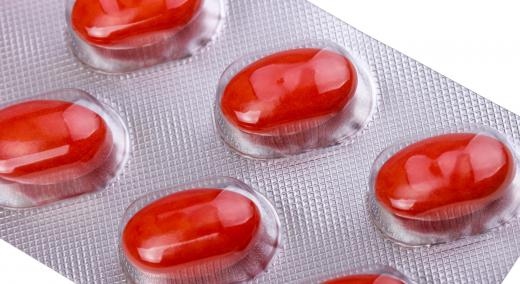At AboutMechanics, we're committed to delivering accurate, trustworthy information. Our expert-authored content is rigorously fact-checked and sourced from credible authorities. Discover how we uphold the highest standards in providing you with reliable knowledge.
What Are the Different Types of Prototype Packaging?
Prototype packaging often is similar to regular packaging, but it is made in a limited run for the prototype and is subject to change. Box and plastic prototype packaging are solid cardboard- or plastic-based packaging types that are meant to enclose the prototype so the product is not seen. Clamshell and blister packaging types are made from plastic and metal foil, but the packages themselves are transparent. Can packaging often is cheaper than other methods. TV-colored packaging is made for prototypes that will be shown in TV commercials, and the colors are optimized for this type of advertising.
Solid packaging is used for many products, especially those that should not be exposed to light. Many food products, cosmetics and entertainment products use such packaging. This type of prototype packaging usually is made from cardboard or plastic takes the form of boxes and bottles, and the design is printed right on the packaging. Depending on the product, there may be smaller packaging units inside a large packaging unit.

Opposite solid packaging are clamshell and blister packaging types, which often are transparent and are made from plastic or a combination of plastic and metal foil. These are used for food products such as bread, many medications and electronic products. With this type of prototype packaging, there may be printing on the clamshell or blister pack, or it may be added to a solid packaging unit with the primary printing being on the solid packaging.
Using can prototype packaging can be cheaper than other methods, because cans cannot be custom shaped as well as other materials and require a fairly standard design. Some prototypes may be best suited for a can, especially fluid-based prototypes. While cans do not have the same level of customization as other packaging, printing usually is applied to the can to give this type of prototype packaging a distinct look.
TV-colored prototype packaging is made with colors that are suited for broadcasting, regardless of the material used. While nearly any color can be shown on TV, some colors do not show up very well or can be confused for other colors. This type of packaging is uncommon, because most products are already being manufactured and have gone beyond the prototype phase when they are being advertised on TV, but some companies may want such packaging for immediate advertising of their product.
AS FEATURED ON:
AS FEATURED ON:











Discuss this Article
Post your comments